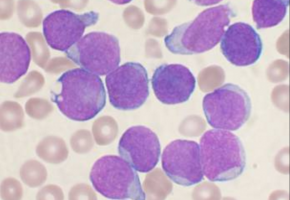
Adult patients with relapsed or refractory B-cell acute lymphoblastic leukaemia (r/r ALL) have a poor prognosis despite intense salvage treatments.
Recent reports have shown that Blinatumomab (Blin) can induce high remission rates in these patients.
Blin is a bispecific T-cell engager antibody construct that is designed to direct cytotoxic T cells to CD19-expressing B cells.
T-cell receptors (TR) which are present on the surface of T-lymphocytes are necessary for recognition of pathogens.
The extremely high diversity (up to 120 million different TRβ gene rearrangements in young individuals) of TR enables protection against the great variety of pathogens.
We investigated the TRβ repertoire in patients on Blin treatment using next generation sequencing (NGS).
NGS is a revolutionary technology enabling the assessment of TR characteristics with very high resolution.
We compared the diversity of TRβ repertoire in r/r ALL patients responding and non-responding to Blin salvage treatment.
The repertoire before Blin administration was significantly (=probably caused by something other than mere chance) more diverse in Blin responders compared to non- responders.
Also the increase of the repertoire diversity during Blin treatment was sharper and significant in responders, whereas non-significant in non-responders.
Further studies on larger patient cohorts are necessary to confirm this observation and to show whether response to Blin can be predicted by TRβ repertoire diversity before treatment.
Source: EHA
We are an independent charity and are not backed by a large company or society. We raise every penny ourselves to improve the standards of cancer care through education. You can help us continue our work to address inequalities in cancer care by making a donation.
Any donation, however small, contributes directly towards the costs of creating and sharing free oncology education.
Together we can get better outcomes for patients by tackling global inequalities in access to the results of cancer research.
Thank you for your support.